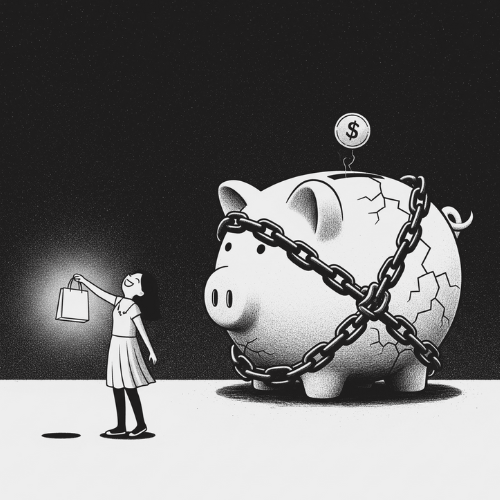- Builder's Path
- Posts
- The Real Cost of “Deserve Ko ’To” Culture
The Real Cost of “Deserve Ko ’To” Culture
Why rewarding yourself feels good, but quietly keeps you broke.

“We buy things we don’t need with money we don’t have to impress people we don’t like.”
“Deserve ko ’to.”
We say it after a stressful week.
After overtime.
After hitting a goal, or simply surviving another Monday.
We click Add to Cart or swipe the card thinking:
“Konti lang naman.”
“1k lang ’to.”
“Minsan lang.”
But a few days later?
The thrill fades. The konsensya kicks in.
And we’re left asking the same thing…
“Bakit parang wala na namang natira?”
How I Went From Saver → Spender → Stuck
When I was younger, I had a habit:
Save my daily allowance during the school year… then splurge it all during summer break.
It made sense to me at the time, no allowance during summer, so I deserved to enjoy.
But this mindset followed me into adult life.
Even when I started working, I’d save up for months…
Then burn through my savings with a “reward”, a new gadget, toy, or some tech upgrade.
Until one day, I realized:
I was always ending up at zero.
I wasn’t building anything.
I felt like I was going nowhere.
That’s when I knew something had to change.
Why Emotional Spending Feels So Good
“We don’t buy things. We buy feelings.”
Emotional spending isn’t just about being irresponsible.
It’s a coping mechanism.
For many of us, it’s a mix of:
Stress relief – “I deserve this, life is hard.”
Social influence – “Budol culture” from TikTok, Lazada, Shopee hype
FOMO – "Everyone else has it, baka maubusan ako"
Self-worth – “If I can buy this, it means I’m doing okay.”
And in the moment? It actually helps.
The problem is when you don’t plan for it…
And it quietly delays your bigger goals.
From Guilt → Clarity: What Changed for Me
Before, I didn’t have a system for spending.
I just hoped I wouldn’t overspend.
That changed when I read I Will Teach You To Be Rich by Ramit Sethi.
It introduced a mindset I now live by:
“Spend extravagantly on the things you love. Cut ruthlessly on the things you don’t.”
It’s not about depriving yourself.
It’s about spending with purpose—and without guilt.
Here’s How to Enjoy Without Regret
If you're stuck in the cycle of gastos muna → ipon later → konsensya always...
Here’s what helped me (and might help you too):
The Guilt-Free Spending System
✅ Step 1: Know your numbers.
If you don’t know how much you can actually afford to spend, you’ll always guess and feel guilty after.
✅ Step 2: Save for joy, intentionally.
Create a “Joy Fund” or “Dream Bucket.”
Put a portion of your income there. This is fun money.
No guilt. No judgment.
✅ Step 3: Spend on what truly makes you happy.
Not just “budol finds”... but things that bring real, lasting joy.
Ask: “Will I still be glad I bought this a week from now?”
✅ Step 4: Delay impulse buys (even 24 hrs helps).
If you still want it after 1–2 days? Buy it.
If not? Budget wins.
Try This Today (Free Tool)
I created a Money Tracker to help you:
Allocate savings for joy + goals
Visualize where your money goes
Create guilt-free space to enjoy life
Download it free here → Money Tracker (Enter your email and you will get it)
Closing Thoughts: Life Isn’t Just a Spreadsheet
“There will be times when a purchase doesn’t make perfect financial sense… but if it brings you real joy and you planned for it it’s still worth it.”
I believe in systems.
But I also believe in living.
The point of managing money isn’t just to hoard it—
It’s to build freedom.
So yes—eat out.
Travel.
Buy that thing you’ve dreamed of.
But do it with intention.
Not as an escape. Not out of guilt. Not to impress anyone.
Do it because you planned for it.
Because you know your numbers.
And because you know you’re still on track for something bigger.
📅 Want help setting up your Joy Fund + Financial System?
Book a free call here → calendly.com/mr-ricyu/30min
See you in the next issue,
—Ric